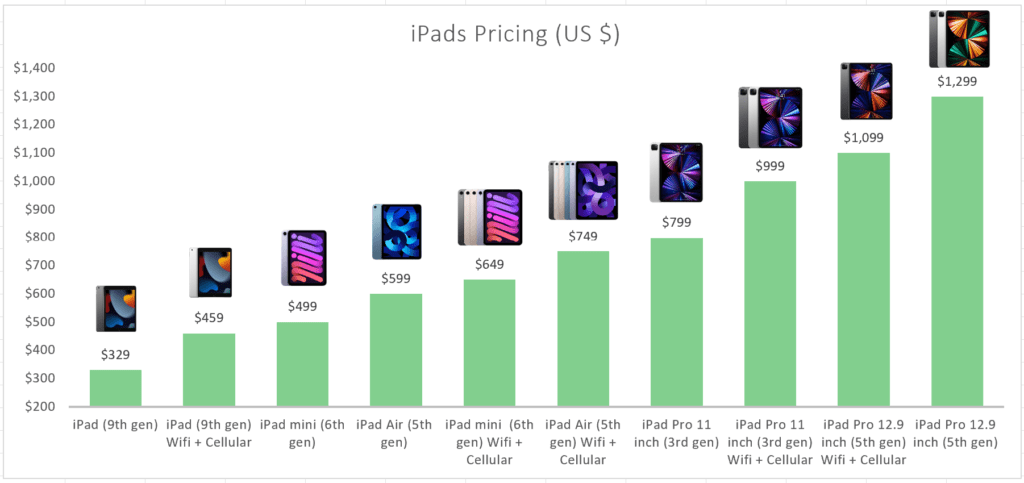With supply disruptions, increased competition, and the highest inflation since 1981, determining the right pricing strategy is crucial. Without the right pricing strategy, your company is bound to run into problems such as being unable to pass price adjustments, customers not understanding your prices, higher rates of defection, etc. Surprisingly these pricing issues can be easily avoided if you know what to look out for. Highlighted below are some of the most common pricing mistakes that companies make:
1. Cost-Based Pricing:
Pricing based on costs ignores the inherent value of your offering. It is not focused on customers, is difficult to track, and creates a risk of under / over-pricing ultimately leaving money on the table. Unlike cost-based pricing, value-based pricing involves setting prices based on a customer’s perceived value which improves customer loyalty, brand value, and profit margins.
2. One Size Fits All:
Your company has lots of different customers with diverse needs. Some customers are looking for premium service and won’t mind paying a higher price whereas others are extremely price sensitive. Each customer segment requires a unique pricing strategy allowing you to capitalize on their willingness to pay. Often companies overly simplify their pricing structure, offering uniform prices for all customer segments. This drastically reduces profit margins and forgoes sales.
3. Outdated Pricing:
In a dynamic market, it is extremely vital that pricing is constantly revisited and revised. With constant fluctuations in the market, it is important that your pricing accounts for changes such as customer demand or supply shortages. Outdated pricing incorrectly reflects the offer’s value, brand image, etc., overall disjointing your pricing strategy from market realities.
4. Scaling Price Points:
Increasing the number of price points and creating multiple offers can help maximize your company’s profit. You can appeal to a wider and more diverse customer base, catering to different budget / psychological needs in the market. The graph below shows Apple’s iPads catering to diverse customer segments via scaling price points.

5. Volume-Based Incentives:
Incentives that are based on quantity purchased ideally encourage customers to secure higher volumes. Often companies set volume targets on absolute dollars / units. This has two main drawbacks:
- Assume you are a window manufacturer, and your distributors must hit a certain threshold to qualify for discount. Certain distributors will be able to meet this target with no issue as they are in high volume markets. Others will have to expend substantial effort to hit the target. It is essential that you adjust incentives according to the relative market size.
- If you are not continually updating your targets, you are simply paying for past volume and not generating growth.
6. Pricing in a Vacuum:
It is imperative to take competitors’ pricing into account when establishing or revising your pricing. Your customers do not consider your offer in a vacuum, its essential that you continually survey the competitive environment for pricing and value attributes.
7. Failure To Establish Internal Procedures:
To successfully deliver a pricing strategy, the right infrastructure (people, data, systems) needs to be in place to better analyze and visualize data. Internal procedures, such as data analysis, customer segmentation, value analysis, negotiation guidelines, etc., work hand in hand with tools like Tableau and Power Bi, enabling accurate pricing insights within the organization.
8. Over Reliance on Sales Team for Pricing Intelligence:
Salespeople play a big role in the successful execution of pricing strategies, but solely relying on them to conjure the perfect price for every customer is detrimental your pricing strategy. Salespeople cannot be expected to evaluate the entire portfolio of customers and purchase transactions to generate optimized pricing. Their focus lies in finding the right solution for their customers and closing the sales cycle. Overly relying on sales input to pricing will result in very emotional decision making and a corporately disjoint pricing strategy.
Final Thoughts:
The above pricing issues can be easily remedied if your company pays attention to them. People say, “insanity is repeating the same thing over and over and expecting a different result”, so leverage the pricing mistakes of others. Our pricing experts at Revenue Management Labs are experts at handling the highlighted points above and can help you optimize your current pricing strategy or to build one from scratch, contact us today!
ABOUT THE AUTHOR Avy Punwasee is a Partner at Revenue Management Labs. Revenue Management Labs help companies develop and execute practical solutions to maximize long-term revenue and profitability. Connect with Avy at apunwasee@revenueml.com




